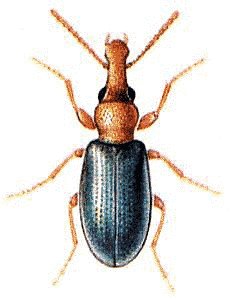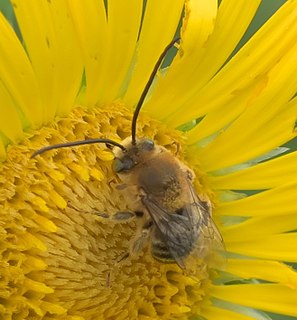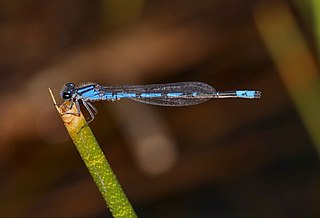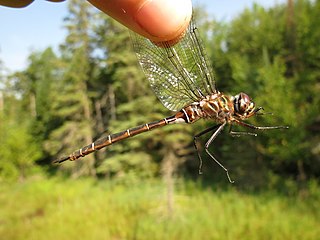
The Integrated Taxonomic Information System (ITIS) is an American partnership of federal agencies designed to provide consistent and reliable information on the taxonomy of biological species. ITIS was originally formed in 1996 as an interagency group within the US federal government, involving several US federal agencies, and has now become an international body, with Canadian and Mexican government agencies participating. The database draws from a large community of taxonomic experts. Primary content staff are housed at the Smithsonian National Museum of Natural History and IT services are provided by a US Geological Survey facility in Denver. The primary focus of ITIS is North American species, but many biological groups exist worldwide and ITIS collaborates with other agencies to increase its global coverage.

The Anthomyiidae are a large and diverse family of Muscoidea flies. Most look rather like small houseflies, but are commonly drab grey. The genus Anthomyia, in contrast, is generally conspicuously patterned in black-and-white or black-and-silvery-grey. Most are difficult to identify, apart from a few groups such as the kelp flies that are conspicuous on beaches.

Wappinger Creek is a 41.7-mile-long (67.1 km) creek which runs from Thompson Pond to the Hudson River at New Hamburg in Dutchess County, New York, United States. It is the longest creek in Dutchess County, with the largest watershed in the county.

Lachesillidae is a family of Psocoptera, or fateful barklice, belonging to the suborder Psocomorpha. Members of the family are characterised by a rounded, free areola postica in their wings. Males have diverse sclerotized genitalic structures. The family includes more than 400 species, most of them in the genus Lachesilla.

Clivina is a genus of ground beetle native to the Palearctic, the Nearctic, the Near East and North Africa. There are at least 580 described species in Clivina.

Salpingidae or narrow-waisted bark beetles is a family of beetles, in the large suborder Polyphaga. The species are small, about 1.5 – 7 mm in length. This family is worldwide distributed and consists of about 45 genera and 300 species.

The Ropalomeridae are a family of acalyptrate flies.

Psyllipsocidae is a family of cave barklice in the order Psocodea. There are about 7 genera and more than 70 described species in Psyllipsocidae.

Eriocampa is a genus of common sawflies in the family Tenthredinidae. There are about ten described species in Eriocampa.

Melissodes is a genus of long-horned bees in the family Apidae. There are at least 140 described species in Melissodes.

Trogiidae is a family of granary booklice in the order Psocoptera. There are about 11 genera and more than 50 described species in Trogiidae.

Enallagma davisi, the sandhill bluet, is a species of narrow-winged damselfly in the family Coenagrionidae. It is found in North America.

Alliopsis is a genus of root-maggot flies in the family Anthomyiidae. There are at least 70 described species in Alliopsis.

Somatochlora cingulata, the lake emerald, is a species of emerald dragonfly in the family Corduliidae. It is found in North America.

Adelpha basiloides, the spot-celled sister, is a species of admirals, sisters in the family of butterflies known as Nymphalidae. It is found in North and Central America.
Paria virginiae is a species of leaf beetle. It is found in North America.

Arigomphus furcifer, the lilypad clubtail, is a species of clubtail in the family of dragonflies known as Gomphidae. It is found in North America.
Animal Ethics is a nonprofit organization formed to promote discussion and debate around issues in animal ethics and to provide information and resources for animal advocates. They also do outreach work in several countries on the issue of speciesism. Their aim is to create a world where moral consideration is extended to all sentient beings. The organization's website covers topics such as speciesism, sentience, veganism and wild animal suffering and has content translated into several languages.















